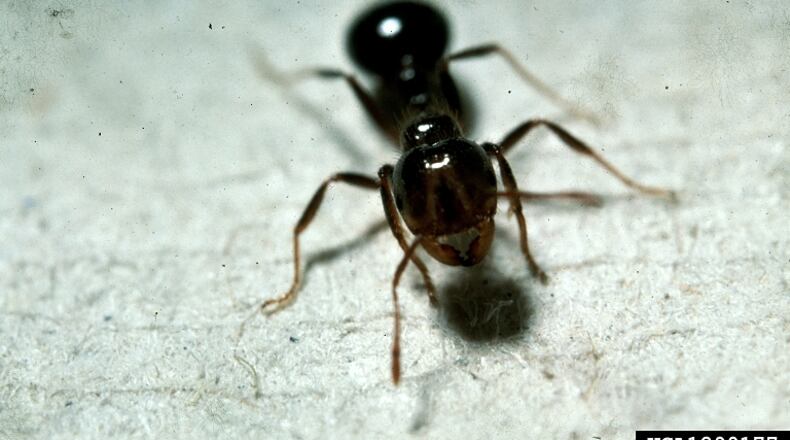Q: I’ve noticed fire ant mounds appearing recently on our property. What are the best products for control? Mike Twilling, email
A: Fire ant control products can be divided into two categories: baits and contact poisons. Baits work very well, but they are slow: It might take weeks to see much difference. Contact poisons are usually fast, but you run the risk of leaving small mounds untreated. Given a chance, these will soon become large. Texas A&M University has done the most research on fire ant management. They have a website that gives an excellent summary of different products and how fast they work. Details at bit.ly/GAbestant.
Q: I had TifTuf Bermuda sod installed a few months ago. I watered it 10 minutes per day for the first six weeks. Now I water Monday/Wednesday/Friday/Sunday. The mowing height is 3 inches. In the sunniest part of the yard, it’s about 70% browned out. Is this salvageable? Gary Jones, email
A: It sounds to me like you watered too much. The goal for watering new sod is to keep it moist for a week or two and then start weaning it down to an inch of water per week, applied at one time. Daily watering leads to leaf disease and root rot. The mowing height should be no higher than 2 inches for this grass. If you mow higher than that, you’ll end up seeing a lot of brown stems each time after cutting. The first thing to decide is if your grass is truly dead or if there is some living greenery close to the ground. If living grass is present, change your maintenance practices appropriately.
Q: I have tomato seedlings, lemon seedlings, and pineapple plants in pots. Can I keep them alive under plastic in the backyard? Amy Bielawski, email
A: It is almost impossible to keep warm-season vegetables alive in winter unless you have a greenhouse. Covering them with plastic brings a very real risk they will become too hot on a sunny winter afternoon. Conversely, keeping them warm on a freezing January night is difficult too. You are welcome to experiment, but I don’t think it will work.
Q: I have 25 Meyer lemons on my tree, but they have stopped growing. They have been the same size for several weeks. Am I just impatient? Art Kunzer, Gainesville
A: I think some of your fruit should be removed (thinned) so the tree can concentrate on those lemons that remain. The recommended ratio is 40 leaves per fruit. Do a quick enumeration and act accordingly.
Listen to Walter Reeves' segments at 6:35 a.m. on “Green and Growing with Ashley Frasca” Saturday mornings on 95.5 WSB. Visit his website, www.walterreeves.com, follow him on Twitter @walterreeves, on Pinterest, or join his Facebook Fan Page at bit.ly/georgiagardener for more garden tips.
About the Author
The Latest
Featured

